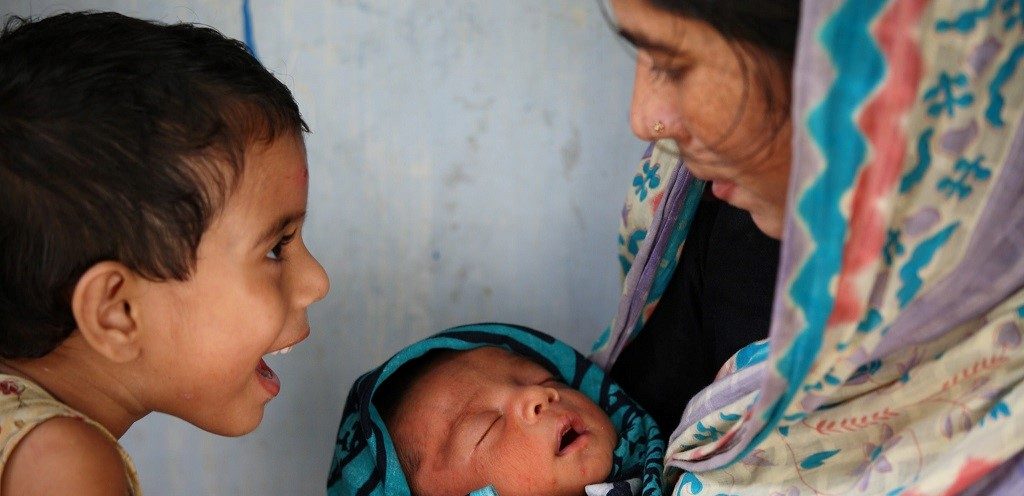Every Newborn: an action plan to end preventable deaths (ENAP) is a road map of strategic actions that harness evidence-based solutions to end preventable newborn mortality and stillbirths, and contribute to reducing maternal mortality and morbidity.
ENAP came into being in 2014, endorsed by 194 member states, at the 67th World Health Assembly. The plan identifies eight specific milestones that guide immediate actions needed by 2020 to best impact the ambitions of the Sustainable Development Goals (SDG) and the Global Strategy for Women’s, Children’s and Adolescents Health by their close in 2030.
This week, at the International Confederation of Midwives Triennial Congress in Toronto, a joint WHO and UNICEF publication – Reaching the Every Newborn National Milestones by 2020: Country Progress, Plans and Moving Forward – will be released. This report details the country leadership and actions taken toward meeting the milestones throughout 2016.
Progress was informed by the participating countries’ use of the Every Newborn Tracking Tool, which captures the processes of country ownership and action. The tool was adopted by 33 new countries between 2015 and 2016 (a 150% increase) and, as a result, the report provides a rich and internationally informed picture of progress made in addressing maternal and newborn health outcomes.
Newborn health plays an increasingly important role in the SDG period; the day of birth and the first 28 days of life are the most vulnerable time for a child’s survival and health. Despite three-quarters of all newborn deaths resulting from preventable and treatable conditions, within the bracket of under-five deaths, newborn deaths declined at the slowest rate during the Millennium Development Goal period (1990-2015), and now account for 45% of under five deaths globally (up from 40% in 1990).
The report presents the good progress made in countries with the highest number of newborn deaths, showing that in total, 48 countries and territories with high burdens of newborn mortality and stillbirth finalized their national newborn plans or strengthened relevant components within existing national health strategies; this includes 19 out of the 20 (95%) countries with the highest number of newborn deaths (in the twentieth country, Mozambique, the effort is underway but not yet finalized).
Slower progress however, has been achieved in countries with the highest rates of newborn mortality per one thousand live births; in these countries, many of which are located in West and Central Africa, intensified efforts are required to integrate the goals, targets and recommendations of ENAP into national health strategies.
Forty countries have now established newborn mortality reduction targets, however only two of the 20 countries with the highest rate of stillbirth, have set a stillbirth reduction target.
The ambitious goals for maternal and newborn survival and wellbeing can only be met with the consistent and harmonized support of partners. USAID’s flagship Maternal and Child Survival Program (MCSP) is proud to be counted among their number and, having been involved since ENAP’s inception, is committed to participate, contribute and guide global policies and guidelines by bringing years of on-the-ground implementation experience. Furthermore, MCSP is able to support the alignment of country policies and guidelines according to ENAP’s global recommendations through its significant presence at the country level.
The report captures new and existing policies and plans in the 51 participating countries, and illustrates their implementation with specific spotlights on country efforts.
MCSP activities were featured in descriptions of the Kangaroo Mother Care Acceleration Partnership Community of Practice (of which MCSP is co-lead), and Bangladesh and Rwanda country spotlights.
In Rwanda, the 2015 National Neonatal Death Audit Report indicated birth asphyxia contributed to 38% of newborn deaths, in a context where 91% of births take place in facilities. The Rwandan Ministry of Health mobilized partners, including MCSP, to initiate a program to improve newborn resuscitation practices among healthcare providers. In 2016, following an intervention targeting capacity building on Essential Newborn Care, Helping Babies Breathe, post training follow up and mentoring, targeted quality improvement activities focused on facility readiness, data use and audits, the HMIS data showed a decrease in neonatal mortality due to birth asphyxia (16.7% in 2015 decreased to 15.5% in 2016). Birth asphyxia is now the second highest cause of newborn death in country – not the first.
MCSP will continue to support the ENAP 2020 trajectory by focusing on:
- Improving quality of care (including antenatal care) in the time around birth and postnatal care;
- Accelerating efforts needed for the care for Small and Sick Newborns;
- Promoting community care and engagement; and
- Meeting the urgent need for more and better data collection and use of data.
With WHO and UNICEF’s leadership, and the advice of experts and partners, ENAP is already proving its strength in wielding the latest epidemiology, evidence of essential interventions, and global and country learning to stir up momentum and drive forward the effort to meet its 2020 milestones. The report reflects a momentous, international effort to inch closer to ENAP’s vision of a world in which there are no preventable deaths of newborns or stillbirths, where every pregnancy is wanted, every birth celebrated, and women, babies and children survive, thrive and reach their full potential.

